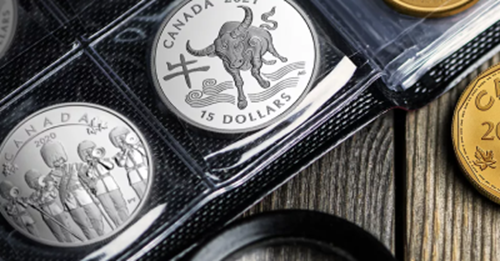Soaring Through History: Discover the Aircraft on our RCAF Centennial Coins
- Mar 28, 2024
- History
- 5 minute read
Over the past 100 years, the Royal Canadian Air Force (RCAF) has had 252 different types of aircraft in their arsenal. While all have a story of service to tell, some of the most memorable and significant of these planes are honoured on our 2024 RCAF Centennial coins.
Learn more about the many aircraft—past, present, and even future—featured in our high-flying coin collection. From the Second World War-era Tiger Moth trainer, to the ultramodern F-35 stealth fighter, discover the history behind these spectacular machines.
Stay tuned as we highlight new aircraft each week!
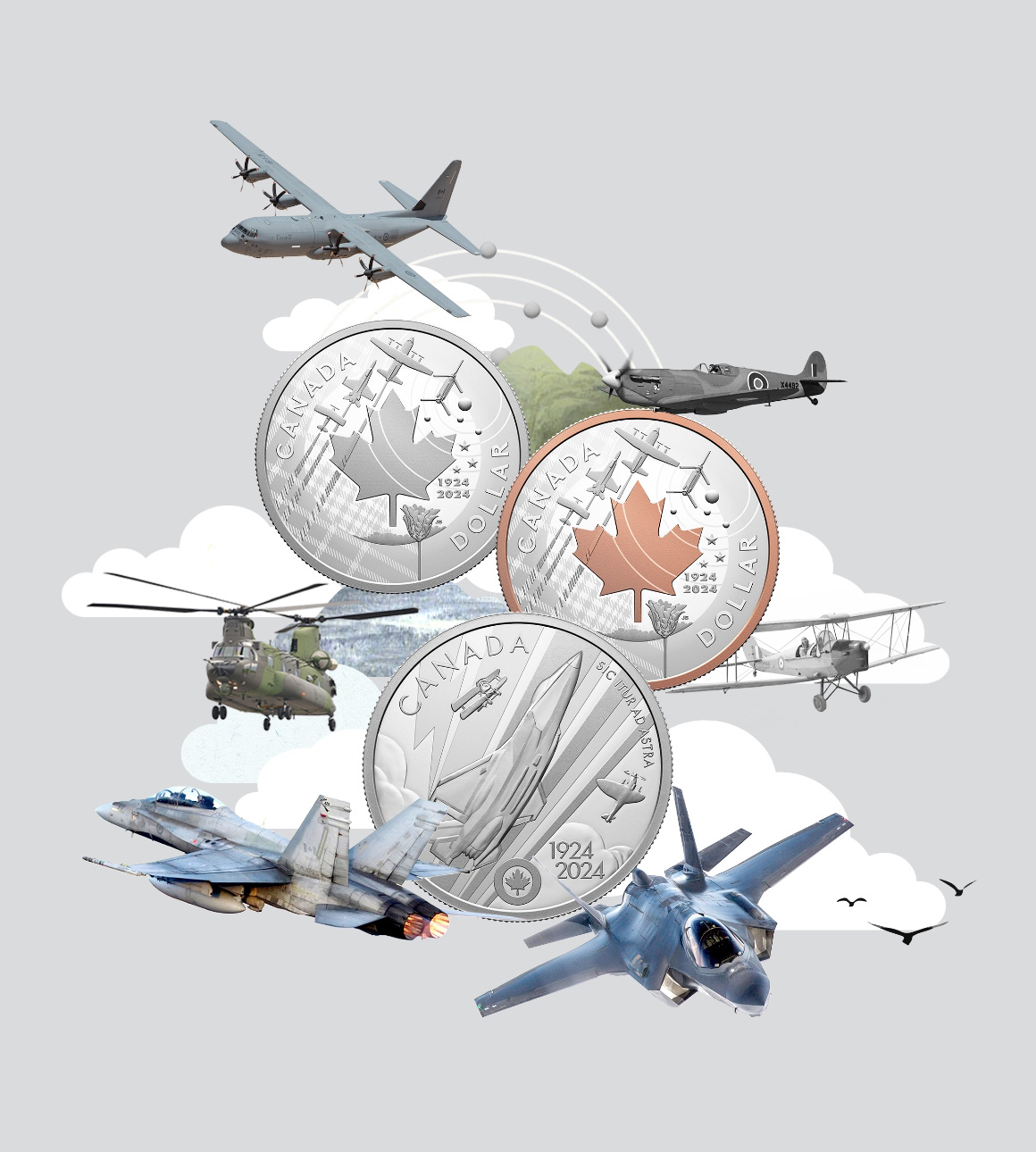

Over the past 100 years, the Royal Canadian Air Force (RCAF) has had 252 different types of aircraft in their arsenal. While all have a story of service to tell, some of the most memorable and significant of these planes are honoured on our 2024 RCAF Centennial coins.
Learn more about the many aircraft—past, present, and even future—featured in our high-flying coin collection. From the Second World War-era Tiger Moth trainer, to the ultramodern F-35 stealth fighter, discover the history behind these spectacular machines.
Stay tuned as we highlight new aircraft each week!
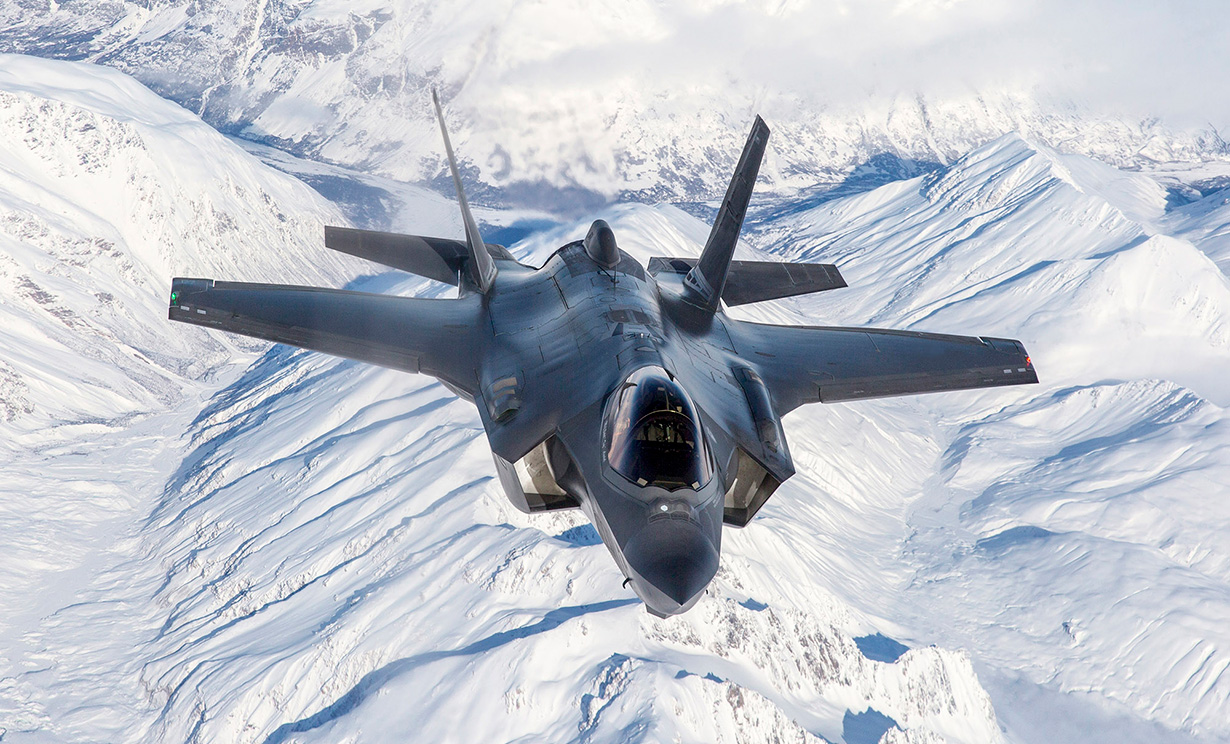
F-35 Lightning II
The F-35 Lightning II is Canada’s newest fighter aircraft. The soon-to-be-in-service F-35 is expected to be delivered to the RCAF starting in 2026, replacing the CF-188 Hornets.
The first test flight for an F-35 was in October 2000, while the first production aircraft came off the assembly line in February 2006 and made its first flight in December of that year. A fifth-generation stealth fighter with advanced avionics, the F-35 is capable of carrying the latest armaments. There are some modifications to our Canadian version of the F-35, including the ability to carry six air-to-air missiles instead of the typical four, and having a drogue parachute to allow for landings on short and icy Arctic runways.
Representing the future of RCAF aircraft as the organization soars into its next 100 years of service, the F-35 can be found starring on our $20 Fine Silver RCAF Centennial coin.
CF-188 Hornet
The CF-188 Hornet (found on our RCAF Proof Dollar) is an aircraft familiar to many Canadians. Serving the RCAF since October 1982, this multi-role fighter is fast, light, and maneuverable—making it ideal for both military operations and aerobatic demonstration. The Hornet is also used for air defence, air superiority, ground attack, tactical support, training, and aerospace testing and evaluation.
The Hornet was selected to replace the CF-101 Voodoos and the CF-116 Freedom Fighters serving in Canada, and the CF-104 Starfighters serving in Europe. Originally designed as a fighter aircraft for the U.S. Navy, Canada requested a number of changes for our version of the Hornet, including a 600,000-candlepower searchlight in the starboard nose, a modified survival kit, and a land-based instrument landing system. The RCAF acquired two versions of the aircraft: a two-seat version used for training (CF-188B), and a one-seat version (CF-188A). Initial training was conducted at Cold Lake, Alberta—where the Hornets are still based out of today (alongside Bagotville, Quebec).
The Hornet’s power, speed (reaching a maximum of Mach 1.8), and target-tracking capabilities has made it successful in many operations in Canada and around the world. Fun fact: Because the Hornet has a range of 3,700 km, the fighters are assisted on their overseas journeys by air-to-air refueler aircraft, such as the Hercules (also on the RCAF Proof Dollar).
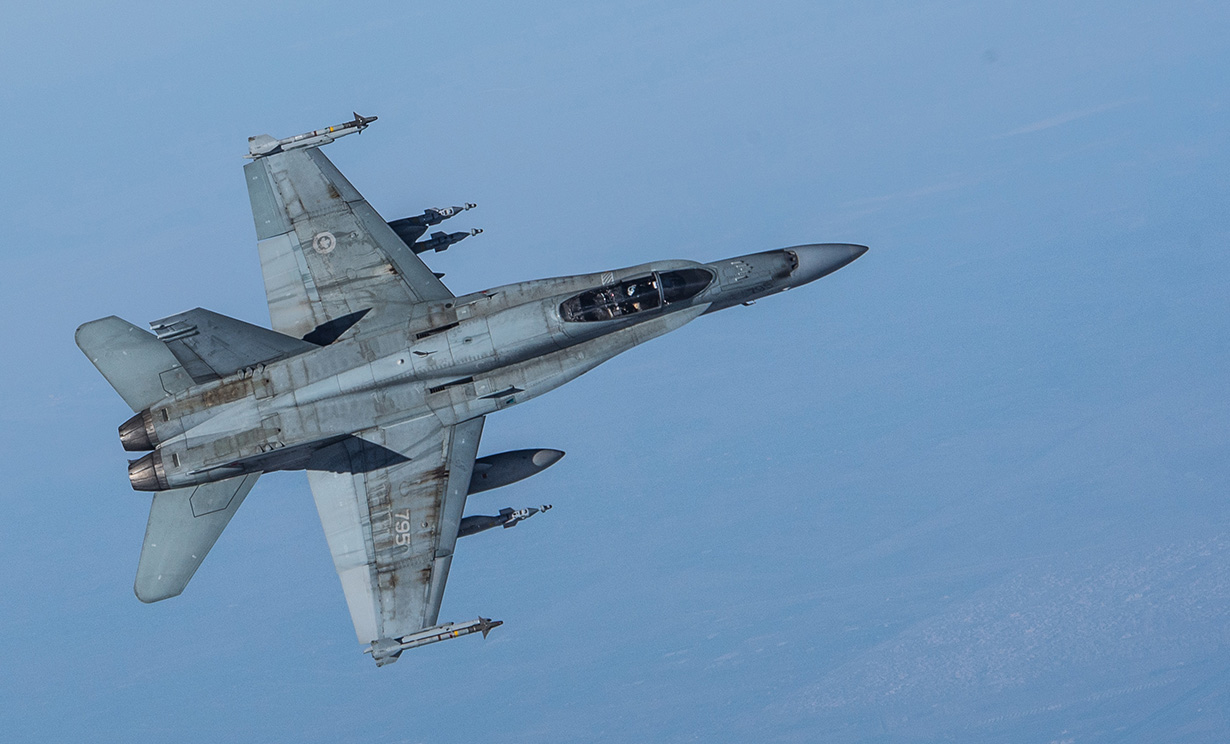
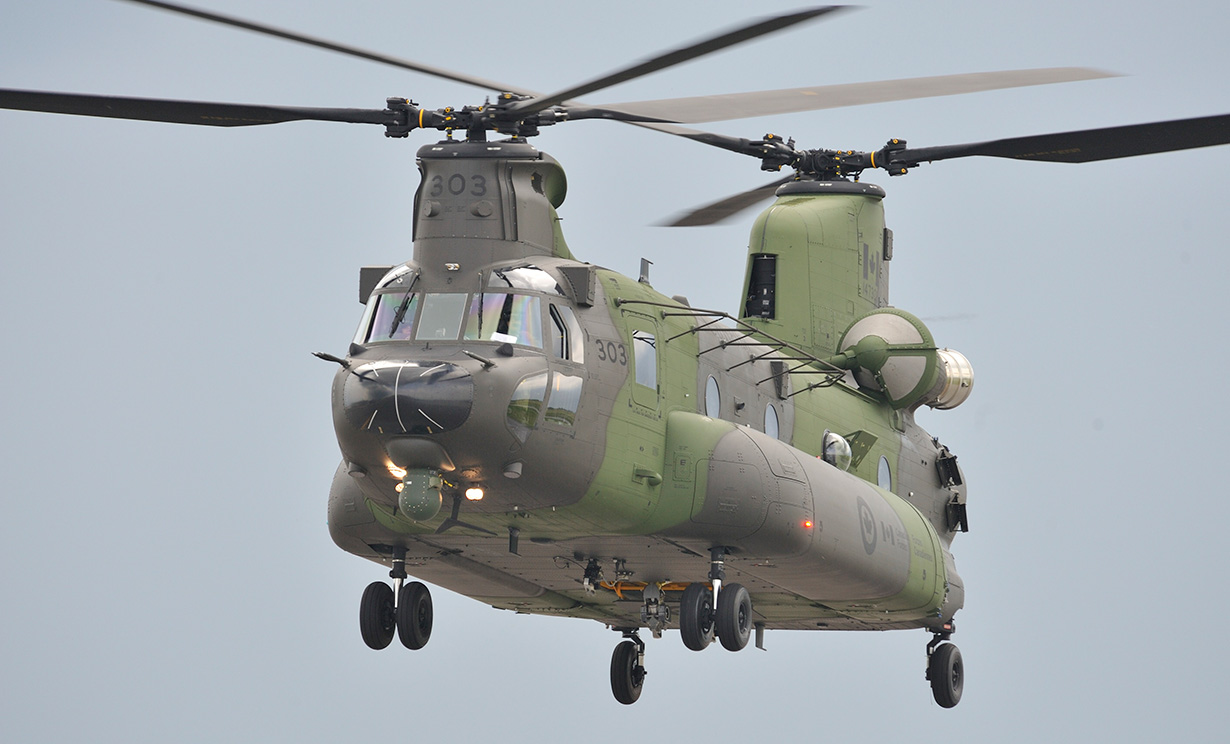
CH-147 Chinook
Initially delivered to the RCAF in 1974, the Chinook is a multi-mission, tactical helicopter used to transport equipment and personnel during domestic or deployed operations. It has enhanced self-protection capabilities such as anti-missile protection systems, radar, laser warning systems, ballistic protection, and self-defence machine guns.
The original CH-147 Chinooks (like the one featured on our RCAF Proof Dollar) were used throughout Canada and participated in army exercises—slinging artillery pieces, vehicles, munitions, and equipment, and transporting personnel and supplies. They even supported the 1976 Montreal Olympics.
These helicopters also flew personnel and supplies to detachments operating in isolated locations (such as the Arctic), and transported debris to collection sites. In 1986, the CH-147 even made it overseas to Norway for a training exercise. These Chinooks were retired in 1991, but variations have served in the RCAF since.
In January 2009, the Canadian Forces acquired six CH-147D Chinooks that were used in Afghanistan to transport personnel and supplies. They were retired in September 2011. Later, in June 2013, the Canadian Forces took delivery of 15 Chinook Model F. These Chinooks are still in use today and are used in tactical lift operations in the same manner as their predecessors did from 1974 to 1991—supporting the Canadian Army, special operations forces, other government departments, law enforcement agencies, and civil authorities.
CC-130 Hercules
The Hercules (proudly portrayed on our 2024 Proof Dollar) truly lives up to its name. This long-range aircraft has heavy lift capacity, can operate on short and unpaved runways, and can fly in severe weather conditions.
The RCAF received its first Hercules in October 1960, and the aircraft has been in RCAF service ever since. The Hercules has participated in various operations: they have conducted transport missions to deliver and move supplies, flown RCAF personnel and aircraft to peacekeeping missions, and have served as navigation trainers and air-to-air refuelers. Importantly, this aircraft has helped provide humanitarian aid to countries all around the world, helping those affected by natural disasters and conflict. Here in Canada, the Hercules has helped evacuate northern communities that were facing forest fires and flooding.
Today, the RCAF has two versions of the Hercules in use: the CC-130J Hercules and the CC-130H Hercules. The newer J-model is used for a wide range of missions, including troop transport, tactical airlift, and aircrew training. It can land and airdrop heavy loads of equipment, supplies, and personnel into hostile environments. The H-model is primarily used for search and rescue operations over the vast span of Canada’s central, northern, and eastern regions. While it also carries out transport missions, its main focus is saving lives.
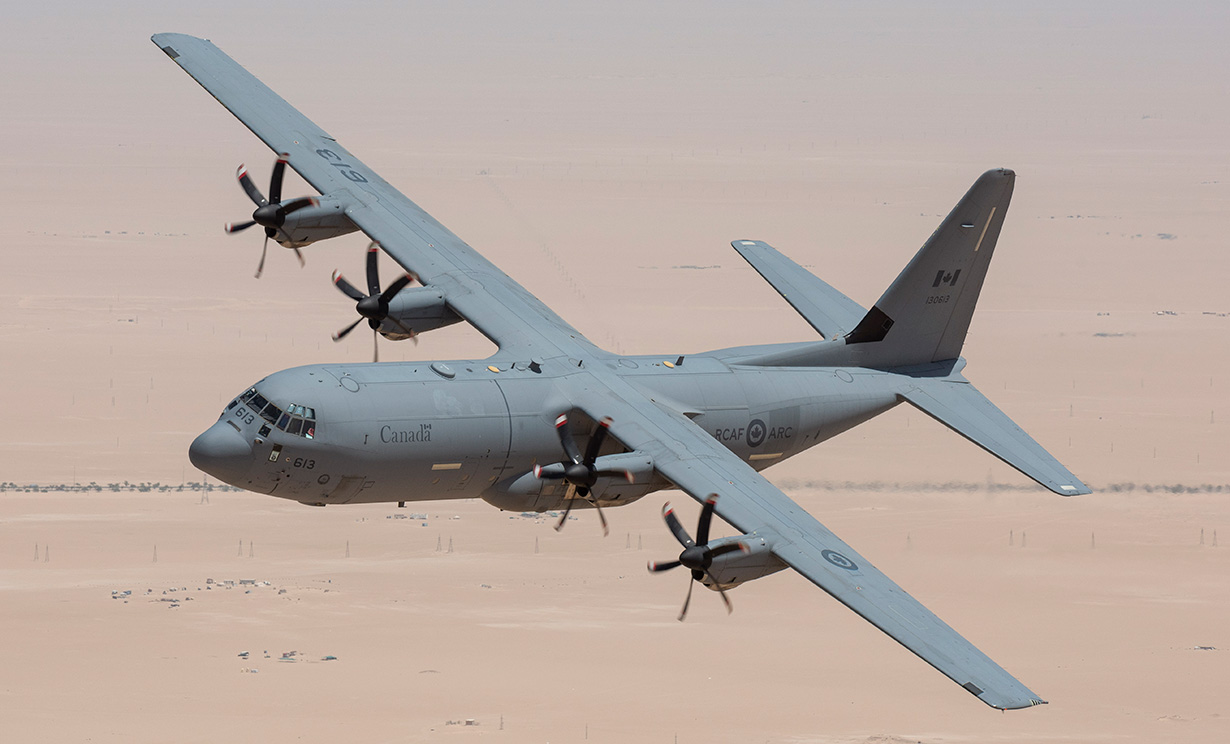

Spitfire
The Spitfire, featured on our $20 Silver RCAF Centennial coin, was one of the best-known British fighter aircraft of the Second World War. It served throughout the war and was the only British fighter aircraft in production before, during, and after the conflict, with the first production Spitfire flown in May 1938.
Of the 17 RCAF fighter squadrons serving overseas during the Second World War, 14 flew the Spitfire in combat. The first squadron to fly it was 403 Squadron, between May and July 1941. The Spitfire served many roles while in RCAF service: it was used to attack targets of opportunity in the air and on the ground, it escorted bombers heading to, or coming back from attacks, and it intercepted raiders.
RCAF Spitfires also helped protect troops during the Dieppe raid of August 1942. After D-day, the Spitfire was flown in an attack role, patrolling specific areas looking for targets. It was also used for aerial reconnaissance, either taking pictures of designated areas, or having the pilots record what they saw on the ground.
In total, 20,351 Spitfire aircraft (of all marks and variants) were built, with production coming to an end in February 1948.
Camel
The Camel (named for the bump on the aircraft’s nose) was one of the best and most well-known British fighter aircraft of the First World War. First flown on February 26, 1917, the Camel was acquired by the Royal Naval Air Service that June. It was used to patrol behind enemy lines and to protect the allies’ own reconnaissance aircraft from enemy attack. It is credited with shooting down more enemy aircraft (1,294) than any other allied type.
The Camel was a highly maneuverable airplane, with a powerful rotary engine and speeds reaching 185 kilometres an hour. It could turn very rapidly to the right—some pilots even made 270° right turns to get to the left instead of the slower 90° left turn. This power to the right meant that small mistakes could have big consequences, especially during take-off. But in the hands of an experienced pilot, the Camel was dangerous to the enemy.
After the war, the Canadian Air Force used Camels at Camp Borden as advanced refresher aircraft and advanced combat trainers. By July 1929, all taken out of service—they were no longer maintainable due to deteriorating wood.
Discover the Camel in all its glory on our $20 Silver RCAF coin.
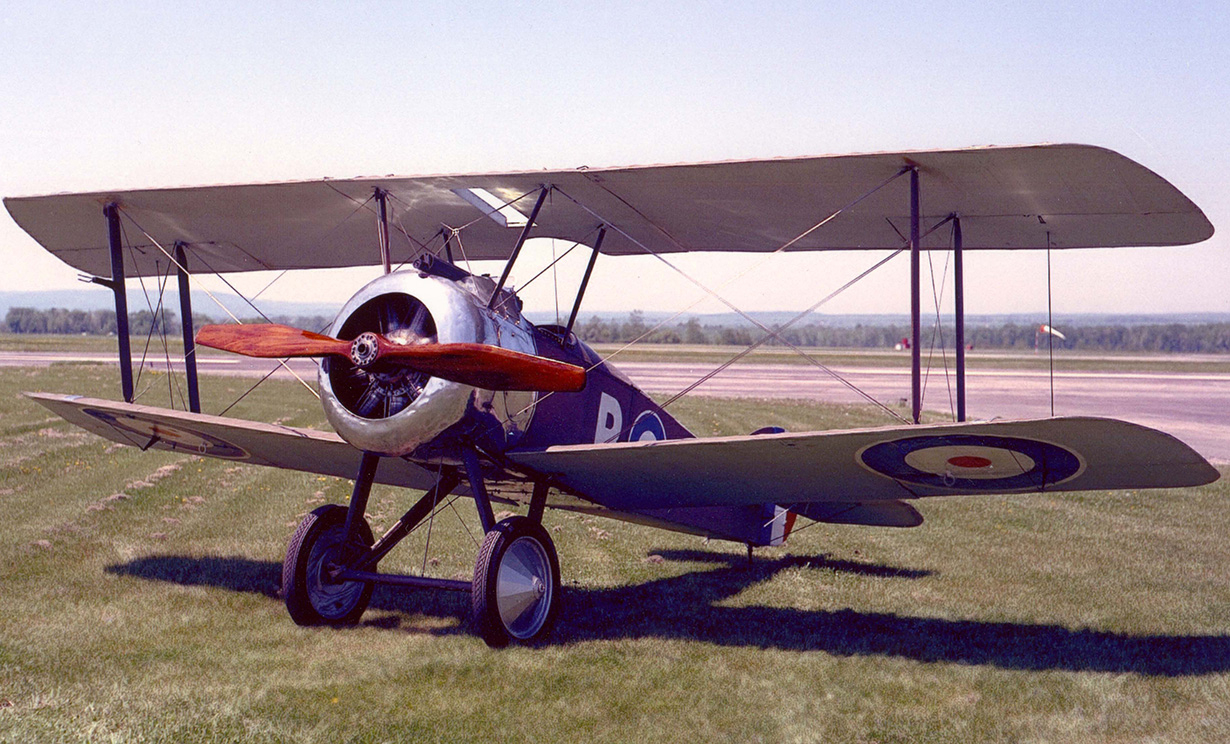
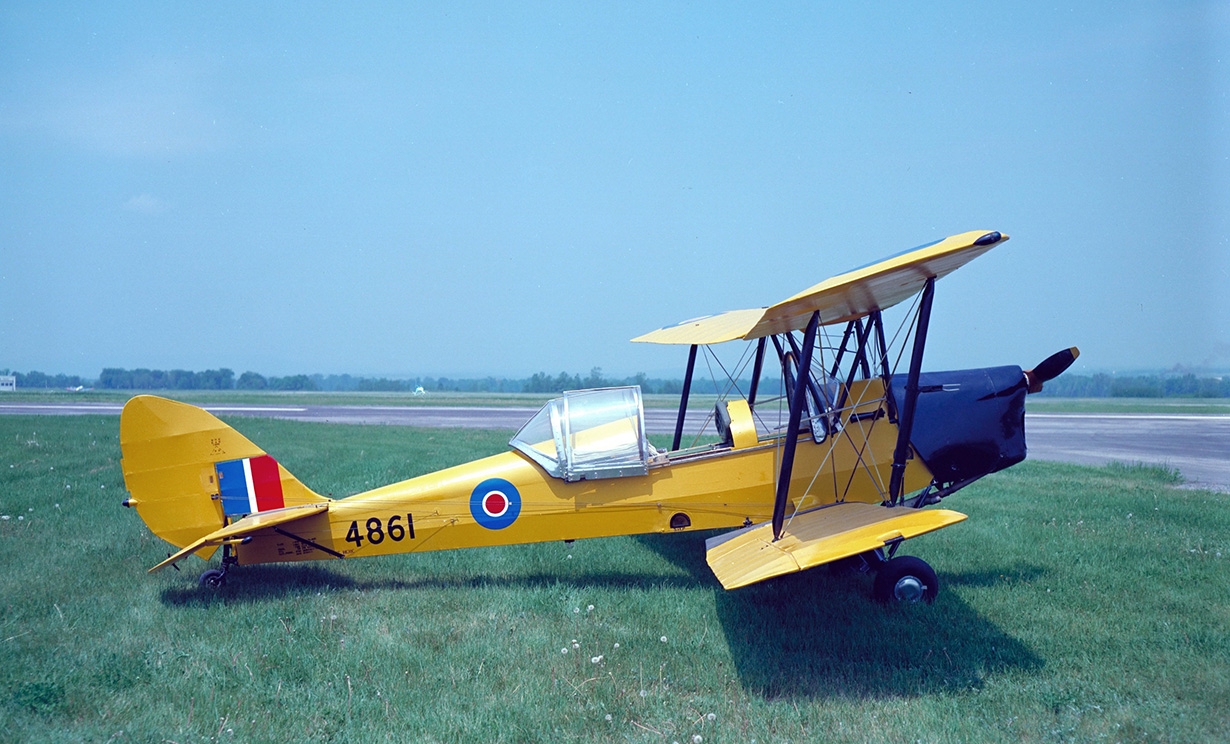
DH-82C Tiger Moth
The RCAF received its first Tiger Moth in January 1938. Featured on our $100 Pure Gold RCAF coin and 2024 Proof Dollar, this aircraft (of which the RCAF would eventually acquire 1,546) had just one role: training. Initially, Tiger Moths were used for pilot training at Camp Borden and RCAF Auxiliary squadrons. But by 1939, even civilian flying clubs were using the Tiger Moths to train RCAF pilots.
During the Second World War, the Tiger Moth was used as a basic pilot trainer in about two-thirds of the Canadian Elementary Flying Training Schools. It had the ability to perform some aerobatics, and could be used as an instrument flying trainer when its large canopy glass was covered.
Canadian-built Tiger Moths had unique features better suited for our climate—and student pilots—than their British counterparts. The cockpit was heated using exhaust gases, and the landing gear was shorter and specially-positioned to prevent the nose from tipping forward. It also had a reinforced tail wheel and hand-operated brakes.
The Tiger Moth remained in use until the end of the Second World War, with the last RCAF Tiger Moth taken out of service on August 5, 1948. Fun fact: These Tiger Moths were disposed of via Crown Assets (now GCSurplus), and many ended up in the hands of civilians.
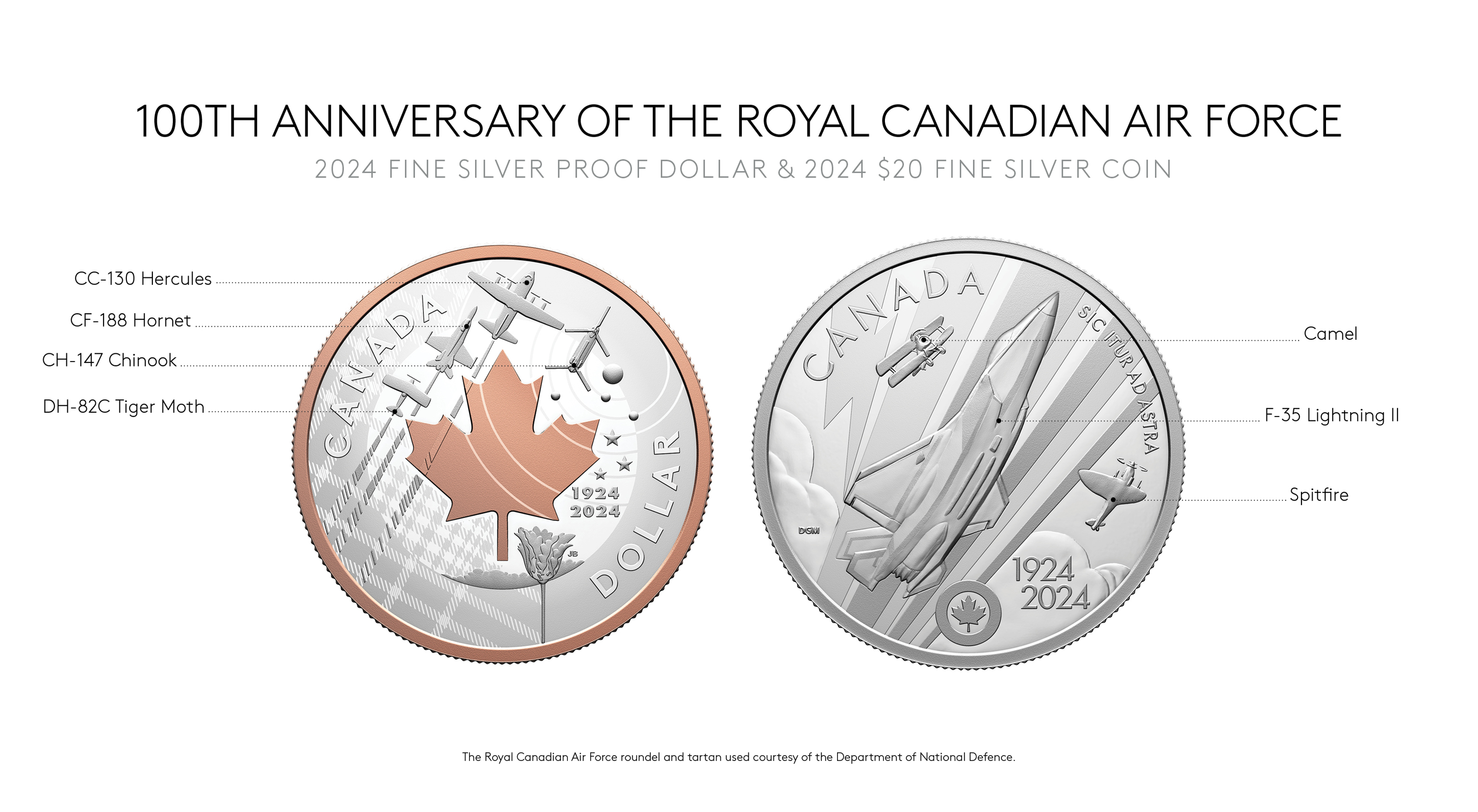
The RCAF Centennial (1924-2024) is an opportunity to honour the history and heritage of Canada’s Air Force and to recognize its members’ contributions to military and civil aviation, national security, and international peace.
Learn more about our suite of 2024 RCAF Centennial coins, all designed in close collaboration with the Royal Canadian Air Force.
Royal Canadian Air Force intellectual property used courtesy of the Department of National Defence.
Information courtesy of and reproduced with permission from the Royal Canadian Air Force.
-
Image 1: Tiger Moth | Photo credit: Library and Archives Canada/Department of National Defence fonds/e011166415
Image 2: F-35 Lightning II | Photo credit: Lockheed Martin
Image 3: CF-188 Hornet | Photo credit: Canadian Armed Forces
Image 4: Chinook | Photo credit: Ken Allan, Canadian Armed Forces
Image 5: Hercules | Photo credit: Cpl Nicolas Alonso, Canadian Armed Forces
Image 6: Spitfire | Photo credit: Department of National Defence
Image 7: Camel | Photo credit: Department of National Defence
Image 8: De Havilland Tiger Moth-4861-RCAF-NAM Ottawa-05 Jun 63-PCN-4628-RCAF Photo | Photo credit: Department of National Defence


Wings Across Canada | Discover 15 places the RCAF calls home
Wings Across Canada | Discover 15 places the RCAF calls home
Located across the country, the RCAF has 15 wings that are comprised of operational and support units—including squadrons that perform specific tactical roles. Keep reading to discover the unique characteristics and roles of each RCAF Wing.
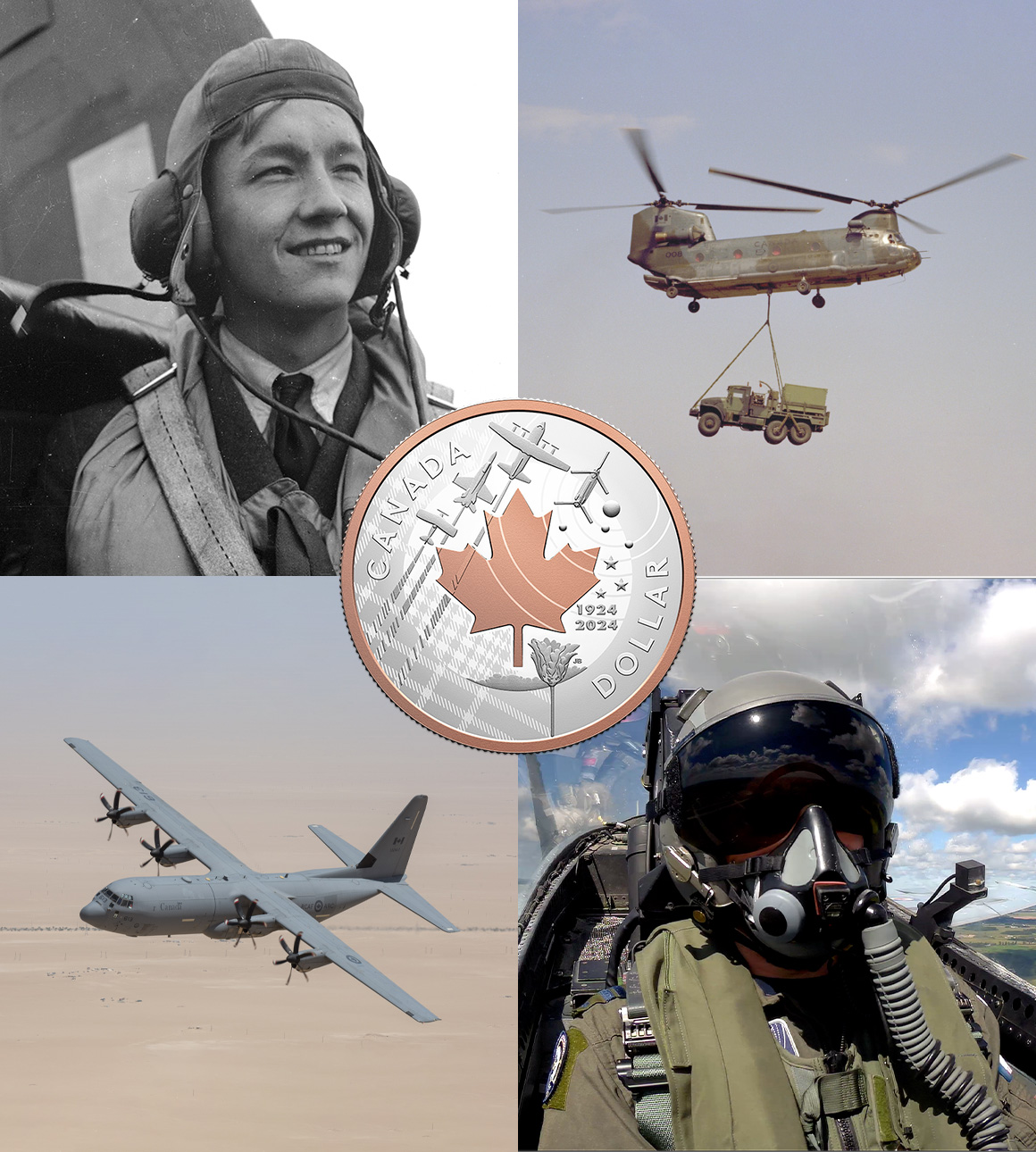

An Ode to a Century of Service: Honouring the RCAF on Canadian Armed Forces Day
An Ode to a Century of Service: Honouring the RCAF on Canadian Armed Forces Day
From present-day RCAF personnel to their trailblazing predecessors, their contributions and sacrifices have made—and continue to make—the RCAF what it is today. Keep reading to discover the vast array of roles that the RCAF has participated in over its century of service.


